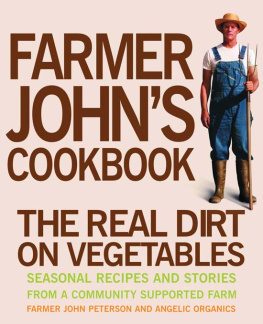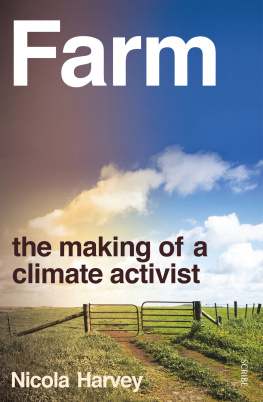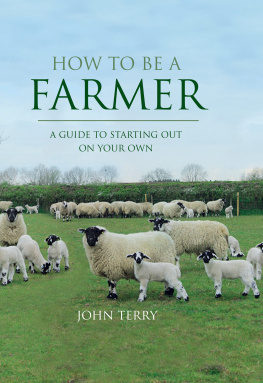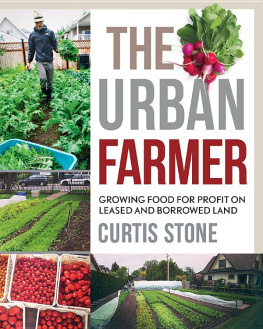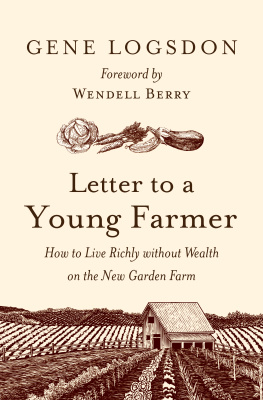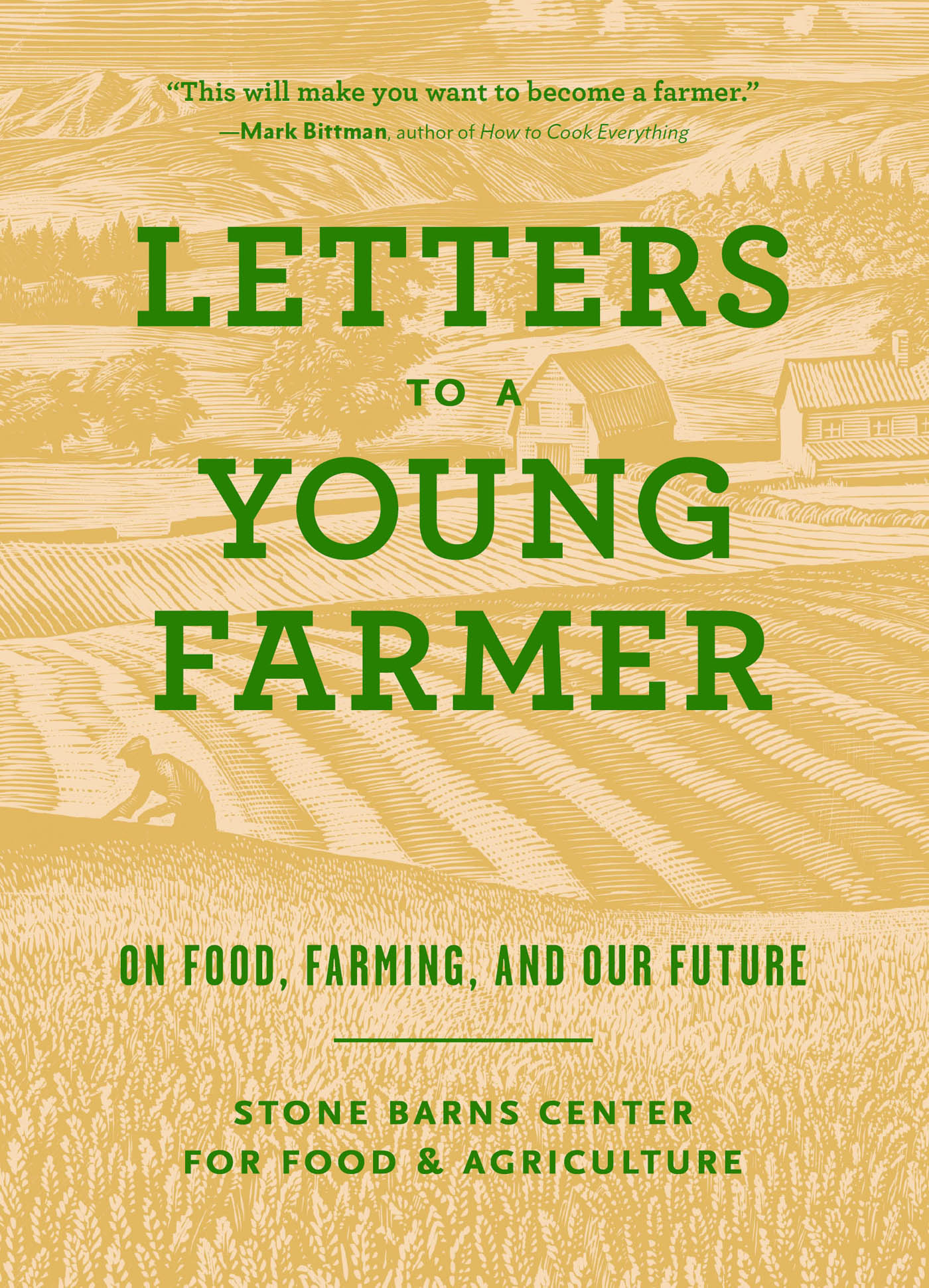
PRAISE FOR
LETTERS TO A YOUNG FARMER
The chance to make a difference in quality of life for all depends on the soil and those who care for and nurture the earth. New young farmers are on the front lines in the struggle for survival, the future of our children and theirs.
Neil Young, Farm Aid
This will make you want to become a farmer.
Mark Bittman, author of How to Cook Everything
An extraordinary harvest of wisdom from a ragtag crew of farmers, cooks, and agitatorsand a must read, not just for young farmers, but for anyone with an interest in a robust food supply in our era of climate chaos.
Tom Philpott, food and agriculture correspondent, Mother Jones
What a wonderful gift this book is to all aspiring farmersfull of sage wisdom, passionate encouragement, and practical advice from some of the greatest food and farming heroes of our time. Their words will inspire and remind you why farming is indeed the most important work to be done.
Naomi Starkman, founder and editor-in-chief, Civil Eats
Young people face a steep and uncertain climb on their journey to farm. Letters to a Young Farmer is fuel for the moments when they might turn back. With love, respect, and a hearty embrace, the books authors show a new generation of farmers that their work is at the very foundation of life on Earth.
Lindsey Lusher Shute, executive director and cofounder, National Young Farmers Coalition

We started out to save the family farmer. Now it looks like the family farmer is going to save us.
Willie Nelson, Farm Aid
You are so young, so much before all beginninghave patience with everything unresolved in your heart andtry to love the questions themselves as if they were locked rooms or books written in a very foreign language. Dont search for the answers, which could not be given to you now, because you would not be able to live them. And the point is, to live everything. Live the questions now. Perhaps then, someday far in the future, you will gradually, without even noticing it, live your way into the answer.
Rainer Maria Rilke, from Letters to a Young Poet, 1929


This anthology was organized by Stone Barns Center for Food and Agriculture, a nonprofit organization on a mission to create a healthy and sustainable food system that benefits us all.
A portion of the proceeds from the sale of this book supports Stone Barns Centers Growing Farmers Initiative and the Berry Farming and Ecological Agrarianism Program.
stonebarnscenter.org
berrycenter.org

PUBLISHED BY
Princeton Architectural Press
A McEvoy Group company
East Seventh Street
New York, New York 10003
Warren Street
Hudson, New York 12534
Visit our website at www.papress.com
2017 Princeton Architectural Press
All rights reserved
No part of this book may be used or reproduced in any manner without written permission from the publisher, except in the context of reviews.
Every reasonable attempt has been made to identify owners of copyright. Errors or omissions will be corrected in subsequent editions.
ACQUISITIONS EDITOR: Rob Shaeffer
PRODUCTION EDITOR: Sara Stemen
DESIGNER: Paul Wagner
SPECIAL THANKS TO: Janet Behning, Nicola Brower, Abby Bussel, Erin Cain, Tom Cho, Barbara Darko, Benjamin English, Jenny Florence, Jan Cigliano Hartman, Lia Hunt, Mia Johnson, Valerie Kamen, Simone Kaplan-Senchak, Stephanie Leke, Diane Levinson, Jennifer Lippert, Kristy Maier, Sara McKay, Jaime Nelson Noven, Joseph Weston, and Janet Wong of Princeton Architectural Press Kevin C. Lippert, publisher
LIBRARY OF CONGRESS CATALOGING-IN-PUBLICATION DATA
Names: Stone Barns Center for Food and Agriculture | Hodgkins, Martha, editor. | Wormell, Christopher
Title: Letters to a young farmer : on food, farming, and our future / edited by Martha Hodgkins, Illustrations by Chris Wormell.
Other titles: On food, farming, and our future
Description: New York : Princeton Architectural Press, [ 2017 ]
Identifiers: LCCN 2016013820 | ISBN 9781616895303 (alk. paper) | ISBN 9781616896034 (epub, mobi)
Subjects: LCSH: Agricultural literatureUnited States.
Classification: LCC S 494.5. A L 48 2017 | DDC 630.973 dc LC record available at https://lccn.loc.gov/ 2016013820
INTRODUCTION
I want to go home.
Not to the house that I live in with my husband and children, but to the place where I grew up and where my roots are firmly planted. I dont know what drives my instinct to return to this place. But maybe my deep attachment to northern Michigan, where my parents still live, and my desire to go back there someday are driven by the place as much as the people.
My childhood was spent amid a glacial landscape of gently sculpted hills, deep sandy soils, crisp lakes, and gravelly rivers. Just as geography and climate shaped my world, so too did the industry of generations of family farmersthose who planted orchards of tart and sweet cherries, who cultivated rolling pastures of hay, hunted morels in their woodlots, and managed extensive plantations of second-growth pine.
My attachment to this place lives in memories of kayaking down the Intermediate River, leaf-peeping at Deadmans Hill every fall, and listening to my parents brass quintet practicing in the kitchen while I tried to do my homework. But among the most powerful memories is one of a farm that lies just outside of the small town where I grew upa farm high atop a glacial moraine between Torch Lake and Lake Bellaire. Its the farm on the hill where my dad got his Scout stuck for three days in the blizzard of . It sits across the road and up the hill from the homes of high school friends.
The landscape of Kalchik farm is carefully tended, as it has been my entire life. But I took it for granted. I did not fully appreciate the kind of care it receives until I had the opportunity to work with imaginative and hardworking farmers like Jack Algiere, our lead farmer at Stone Barns Center for Food and Agriculture. But I did have a sense that Kalchik farm represented a brand of stewardship and a protective spirit that made our community special, for it was managed in ways that were respectful of both the natural environment and the people who live there.
Today, knowing the thought and care that Jack gives not only to the intimate management of our farm but also to the larger landscape of woodlands and creeks of which the farm is a partknowing this now, when I pass Kalchik farm on visits home, I think about what Mr. Kalchik sees that I do not see when he looks out across that extraordinary landscape. I am not a farmer, as Mr. Kalchik and Jack are, but Jack is teaching me to observe, to look closely and try to understand what the landscape tells us: Weak stems and the arrival of new pests may mean that the soil has too much nitrogen. Weedy pastures rich in docks may be pointing to subsurface compaction of soil and a calcium deficiency. The disappearance of kestrels may warn of too many herbicides applied in fields well beyond our farm. Jack has taught me to listen, to watch, to see, as the poet William Wordsworth said, into the life of things.
Next page

